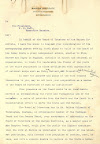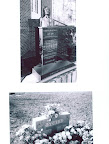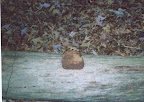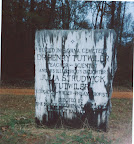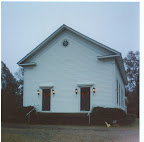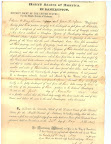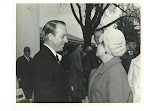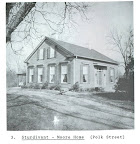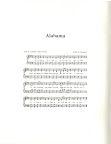Jimmie Lee Jackson (1938 – 1965) was born and raised here in Marion. As a Civil Rights protester, Jackson participated in a demonstration in Marion on the evening of February 18, 1965, which erupted in violence. During the melee Jimmie Lee Jackson was shot. He died at the hospital in Selma eight days later on February 26th. His death, coupled with other Civil Rights incidences, provoked the Selma to Montgomery marches, a watershed event in the Civil Rights Movement.
A photograph of Jimmie Lee Jackson.

A memorial plaque for Jackson in Marion, Alabama.

Jimmie Lee Jackson is buried in a small cemetery near Marion on Highway 14 East.

A distinguished graduate of the Virginia Military Institute where he was valedictorian in the Class of 1961, Jonathan Myrick Daniels (1939-1965) won both Woodrow Wilson and Danforth Fellowships. A native of Keene, New Hampshire, Daniels pursued graduate study in English at Harvard University before switching to the Episcopal Theological School (now Episcopal Divinity School) also in Cambridge, Massachusetts. When Dr. Martin Luther King called for seminarians and clergy to come to Alabama to work for the civil rights of African Americans, Jon Daniels, still a seminarian, answered that call. On August 20, 1965, in Hayneville, Alabama, off US 80, he was killed in an altercation. Another white Catholic priest was badly wounded.
Jonathan Daniels was buried in his hometown of Keene, New Hampshire. In 1994, Daniels was designated a martyr of the Episcopal Church. His alma mater, Virginia Military Institute, created the Jonathan Daniels Humanitarian Award (President Jimmy Carter is a recipient) and has named the arch in their new barracks for Jonathan Daniels. VMI also placed a memorial to Daniels on the courthouse square (Lowndes County) in Hayneville, Alabama.
Jonathan Daniels, Class of 1961, Virginia Military Institute (credit: VMI Archives).

VMI’s memorial to Daniels in Hayneville, Alabama (credit: VMI Archives).
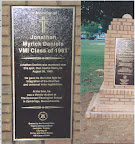
Below are two more images related to Black History Month which have recently come my way:
An old snapshot of the Crossroads School (Cross Road School) cira 1950s or 1960s where Coretta Scott King went to school through the six grade. Photograph courtesy of Rosa Martin and Family of the Mt. Nebo A.M.E. Zion Church in North Perry County.
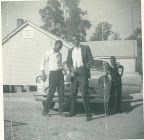
A photocopy from the book King Remembered (Norton, 1986) by Flip Schulke and Penelope Ortner McPhee. It shows the Marion City Hall (now the Alabama Military Hall of Honor) in the 1960s with Blacks and Whites waiting in line to either vote or register to vote.


